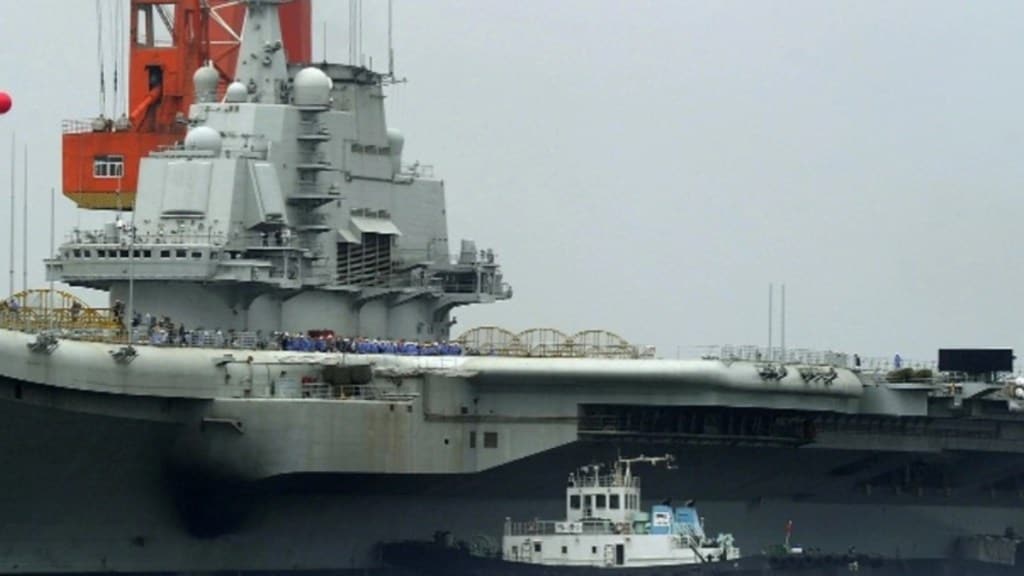In recent years, China’s People’s Liberation Army Navy (PLAN) has garnered global attention for its rapid expansion. With over 370 ships and submarines, it is now the world’s largest navy in terms of sheer numbers. However, a closer examination reveals significant weaknesses that undermine its capacity as a credible maritime power. From untested combat capabilities to technological inadequacies and questionable export practices, the PLAN’s ambitions of global dominance are riddled with vulnerabilities.
Combat Experience: The Achilles’ Heel
While the PLAN boasts an impressive fleet size, its lack of combat experience is a glaring weakness. Since the Sino-Vietnamese War of 1979, China has not engaged in a major naval conflict. By contrast, navies like those of the United States, India, and Australia have honed their operational expertise through decades of real-world missions, including high-intensity conflicts, humanitarian operations, and joint exercises.
The PLAN’s exercises often expose this shortfall. For instance, during joint drills with Russia in 2021, Chinese vessels struggled to synchronize operations, highlighting inefficiencies in command structures and interoperability. Similarly, its carrier strike groups, centred around the Liaoning and Shandong, remain in a developmental phase, with limited operational readiness compared to U.S. carrier strike capabilities.
The lack of live combat testing leaves PLAN commanders and personnel unprepared for modern naval warfare’s dynamic and unpredictable nature. A hypothetical conflict in the Taiwan Strait or South China Sea would test these vulnerabilities, potentially exposing the limits of China’s naval power.
Technological Vulnerabilities
China’s rapid naval expansion has often prioritized quantity over quality, leading to frequent technological setbacks. The PLAN’s advanced platforms, such as the Type 055 destroyers and Type 093 submarines, are celebrated as cutting-edge. However, real-world performance often falls short of expectations.
Recent incidents exemplify this issue. In mid-2024, a new nuclear-powered submarine sank during construction in Wuhan, reportedly due to critical design flaws and lapses in quality control. Similarly, the much-hyped DF-21D “carrier killer” missile—hailed as a game-changing anti-ship weapon—has yet to prove its reliability in contested environments, with experts questioning its effectiveness against advanced countermeasures.
Even China’s efforts to emulate the U.S. Navy’s blue-water capabilities have encountered challenges. The Liaoning-class carriers lack the capacity for sustained global operations, partly due to insufficient replenishment capabilities and logistical support infrastructure. For a navy aspiring to project power globally, these technological shortcomings are significant obstacles.
Exporting Substandard Naval Assets
China’s defence exports are a cornerstone of its strategy to extend influence in the Indian Ocean Region (IOR). However, these exports often come with hidden costs.
Bangladesh’s purchase of two Ming-class submarines in 2017, marketed as modern assets, revealed outdated technology and high maintenance costs, rendering them liabilities rather than strategic assets. Similarly, Sri Lanka’s P625 frigate, a gift from China in 2019, faced recurring mechanical failures, raising questions about Beijing’s commitment to quality.
Even larger deals are not immune. Thailand’s purchase of Yuan-class submarines was indefinitely delayed when Germany refused to supply critical propulsion systems, exposing China’s dependence on foreign components for its advanced platforms. Such episodes tarnish Beijing’s reputation as a reliable defence partner and erode trust among IOR nations.
Debt Diplomacy and Strategic Leverage
Beyond exporting substandard equipment, China employs dual-use infrastructure projects to foster dependency. Ports like Hambantota in Sri Lanka and Gwadar in Pakistan are touted as commercial ventures but are often leveraged for strategic military purposes. These projects saddle recipient nations with debt, granting Beijing outsized influence over their maritime policies.
In the Maldives, for instance, Chinese-built harbour facilities remain underutilized due to poor planning and lack of local expertise, further entrenching dependency on Chinese contractors for maintenance and operational support. Such practices have sparked a regional backlash, with nations reassessing their engagement with Beijing.
Geopolitical Implications
The PLAN’s vulnerabilities have significant implications for global and regional security, particularly in the Indo-Pacific. Quad nations—India, Japan, Australia, and the United States—have emphasized the importance of quality over quantity in naval capabilities. India’s leadership in anti-piracy missions, humanitarian assistance, and multilateral exercises contrasts sharply with China’s transactional approach, strengthening its credibility as a regional security provider.
Moreover, China’s ambitions in the Arctic and Atlantic remain constrained by logistical and infrastructural deficiencies. Unlike the U.S. and European navies, which operate with seamless global reach, the PLAN’s operations are largely confined to the South and East China Seas, underscoring its inability to sustain extended missions far from home.
A Hollow Giant?
The PLAN’s meteoric rise has undeniably shifted the balance of power in the Indo-Pacific, but its shortcomings cannot be ignored. A fleet built on untested technology, limited combat experience, and exploitative export practices risks being more illusion than reality.
As nations in the Indian Ocean Region and beyond recalibrate their strategic priorities, the PLAN’s quest for maritime dominance faces growing resistance. For China, addressing these vulnerabilities is not just a matter of prestige but a prerequisite for becoming a credible global naval power. Until then, the PLAN’s rise may remain an impressive facade, masking deeper structural weaknesses that undermine its long-term ambitions.
China’s maritime strategy is a study in contrasts: rapid expansion meets operational fragility, technological ambition clashes with quality deficits, and global aspirations stumble against regional scepticism. While the PLAN may dominate headlines, its weaknesses remind us that in the complex theatre of naval power, size alone is no substitute for reliability, trust, and proven capability.

